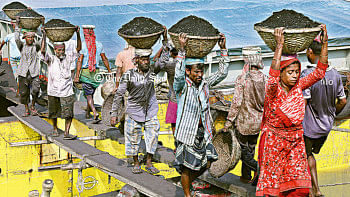A wind of change in fashion industry

Our hope with the campaign has been to encourage reliance on local products, boosting productivity, economic development, and creativity, while encouraging the concept of conscious living — which promotes the understanding that we are all in this together and for a better world.
As we discuss conscious living, the extremely trendy concept of slow fashion comes into the narrative. Noble as it may sound, some of us are still confused about the specifics.
What is slow fashion, and how does it help the world?
In the last decade we have seen quite a few 'winds of change' in the world ranging from poverty alleviation, to major initiatives taken to reduce air pollution. These changes have finally reached our fashion industry, in terms of slow and sustainable fashion.
Based on the given principles, an increasing number of fashion brands are rejecting the principles of 'fast fashion' and replacing the capitalist technique with a safer and more sustainable approach — that goes by the name of slow fashion.

Why the sudden fuss?
The answer is quite simple. All because our time in the world is finite and the earth is ageing. If we do not pay heed to the warning bells that come in the name of climate changes and natural calamities, today; there may not be a future at all for the coming generation!
Thus, the term slow fashion has become a statement towards a greener future, because now most of us realise that living days on this planet is numbered and all of us want to make the most of it while maintaining a clean and habitable environment.
What is wrong with fast paced fashion?
Fast paced fashion, although seemingly appropriate for the fast paced life of the twenty first century works on the contrary, using up a huge amounts of predetermined energy, marking a huge carbon footprint with the usage of synthetics and producing tonnes of waste that has to either be buried in the landfills, or get incinerated. Fast paced fashion also adversely affects the consumer mind, forcing them to buy more clothes than necessary, wearing clothes for fewer times, and throwing them away sooner than necessary.
However, this was not always so.

Before the industrial revolution, every country sourced and produced their garments, locally. People would purchase high quality items that would last a long time and sometimes even made their own clothes from locally available resources. Clothing, back then actually reflected the culture of the nation and the people wearing them.
In context to globalisation and the concept of a 'one connected world,' it is no longer possible to stay away from the rest of the world. Modern day slow fashion is slightly different from the pre-industrial notion. Slow fashion, today, encourages high quality production of clothes, encouraging buyers from all over the world to purchase fewer clothing with a brand value and putting more emphasis on the skills of the artisan rather than computerised mechanical copies.
The 'deshi' perspective
Slow fashion helps us splurge on 'deshi' textiles and the handloom industry. This means that we buy more Jamdani, khaadi, Rajhshahi silk and Tangail taants, so that the industry flourishes and the artisans are paid fair wages encouraging them to stay with the industry in the longer term.

Final words
The values that make up the slow fashion movement, demand a complete overhaul of the production and consumption process in the fashion industry. These values not only affect the designers but also the thought process of the consumers. In order to truly make this approach effective, the consumers must be able to look beyond the appeal of fast fashion; they must be able to recognise the negative effects of the affordable.
The awareness can be maintained and justified by producing, ethical sustainable products and telling the customers about it. Letting them know about the true representation of brands. Letting them know about the brands focus on quality over quantity and their valuable craft stories. Slow fashion encourages us to make our wardrobes more emotionally worthy, while simplifying it in numbers.
To keep matters in context— Is a cleaner environment not far better than wearing a polyester dress just for tomorrow?

Photo: Sazzad Ibne Sayed
Styling: Sonia Yeasmin Isha
Model: Tabinda, Manoshi
Makeup: Farzana Shakil's Makeover Salon
Wardrobe: Mayasir by Maheen Khan
Jewellery: Kolors of Kathmandu
Location: InterContinental Dhaka
In conversation with MAHEEN KHAN
Maheen Khan, proprietor of Mayasir — a renowned ethnic store in Dhaka, had a lot to say on the matter of slow fashion. According to the designer, it is the ideal time to focus on the 'slow fashion' movement because people today are more conscious about child labour policies, organic products, and the negative effects of waste and pollutants, than before.

"There was a time when people used to wear organic cotton and khaadi only. Then it was suddenly lost to aggressive capitalist arrangements, and people became more attracted towards glitz and glamour. Then there came a time when everything natural, and organic clothing suddenly lost their charm. But somehow, the tables have finally turned and people are realising the benefits of the natural" said Maheen Khan.
"Having said that, it is certainly our duty to provide these people with the appropriate products, that are easily accessible, affordable and attractive," she added.
She also took time to inform us that India is already doing that in abundance.
"While they are promoting local items in their household and local clothes in their wardrobes, all we are doing is taking pride in foreign items when we too have an abundance of unique items that could easily surpass the former."
Whatever the current situation Khan was quite hopeful about the future.
"Bangladesh is certainly moving in the right track, hopefully in the near future we will be able to regain what we have lost."


 For all latest news, follow The Daily Star's Google News channel.
For all latest news, follow The Daily Star's Google News channel. 



Comments